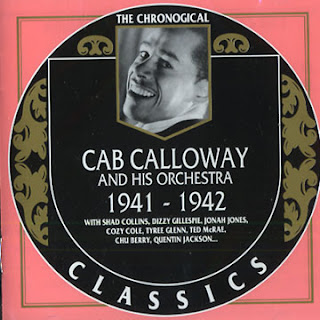Ella Fitzgerald - Smooth Sailing
I recently saw the Ella Fitzgerald documentary, Just One of Those Things, which was ok, but it rekindled my love for her voice and music. "How High the Moon" was discussed and realizing my gap of knowledge in her history---her work with Chick Webb is all I know pre-Verve---I picked up Smooth Sailing. And while this may be old hat to some of you, it's obvious that her stature as a great jazz vocalist was established by the tracks on this compilation for Decca. For the longest time, all I knew about was her recordings for Verve: songbooks, Live in Berlin, collaborations with Louis Armstrong, Duke Ellington, etc. These recordings, made between 1945 and 1955, showcase Fitzgerald in small and large group settings, but really she dominates everything from start to finish.
Besides Oliver, Fitzgerald is accompanied by the orchestras of Bob Haggart and Vic Shoen. The small groups feature top musicians and whom I believe were also in her touring band including then-husband Ray Brown on bass, Hank Jones on piano, and longtime Jimmie Lunceford drummer, Jimmy Crawford. A couple of tracks also feature Bill Doggett's organ, but he is contributes just a few melodies and chords. Otherwise, except for two solo spots for tenor saxophonist Sam "The Man" Taylor and the piano melody on "Flyin' Home", it is all Ella Fitzgerald. Her presence is so powerful that even the cheesy choir that sometimes accompanies her are easily forgivable or easily ignored. She is truly a one-woman band.
There are twelve tracks which include standards, swing era classics and an impromptu blues, "Ella Hums the Blues", that features eight blistering choruses of Fitzgerald scatting. It's an amazing performance that demonstrates the command she has on her voice. Everything from her intonation, her rhythmic phrasing, and her lines are impeccable. She single handedly (not really, there were others who were doing the same thing) proved that the vocalist could easily imitate an instrumentalist. Her command is so powerful you hardly notice just how virtuosic the performances are.
The uptempo version of "Oh Lady Be Good" from 1947 is another exciting performance. After freely phrasing the melody, she scats for five choruses quoting "tisket-a-tasket" and "Ooh Bop Sh'Bam". Her command of the bebop vocabulary is obvious throughout and on this song she sings the tritone and outlines the tritone substitution. She even sings a few bars with a nasal voice that borders on sounding like a bee! On "How High the Moon", she sings the melody, scats, improvises new words à la "Mack the Knife", and inserts Charlie Parker's contrafact of "How High The Moon" entitled "Ornithology".
Noteworthy are the numerous swing instrumentals where she scats the melody: "Smooth Sailing" by Arnett Cobb, "Preview" by Paul Quinichette, and the two songs associated with Benny Goodman "Flyin' Home" and "Air Mail Special". On all of these, her voice is often doubled by another instrument but she is the lone soloist. With Fitzgerald, the possibilities of improvisation are at her feet and she seems to freely sing her way through the material. Like the great improvisers, it sounds as natural to her as is breathing.
Judging by the commercial sounds of the orchestra and the background singers/choir, it sounds like Decca was trying to score a hit and with all of the swing numbers, I'm guessing they were shooting for the rhythm and blues market. As a result, "Angel Eyes" is really the only ballad. Her performance is so strong that it seems to be the standard that everyone else is compared to. The control of her timbre is noteworthy as she has a tendency to lighten up her voice on the higher notes. Most likely to control her volume as the performance is overall not that dramatic, and she might otherwise be too loud. In general, on standards, she sticks to the melody but does take her liberties now and then. This is also the best arrangement by Sy Oliver, who arranged a a few others on this compilation. Despite the cheesy ending, it is appropriately dark with nice color tones and a prominent piano part, that again seems to be the standard arrangement for big band and/or studio orchestras.
 |
| Ella Fitzgerald and Ray Brown |
 |
| Cover for both a one disc 2007 US compilation (most of the songs are there) and a two-disc import which lists all tracks from 1944-1954 |





Comments
Post a Comment